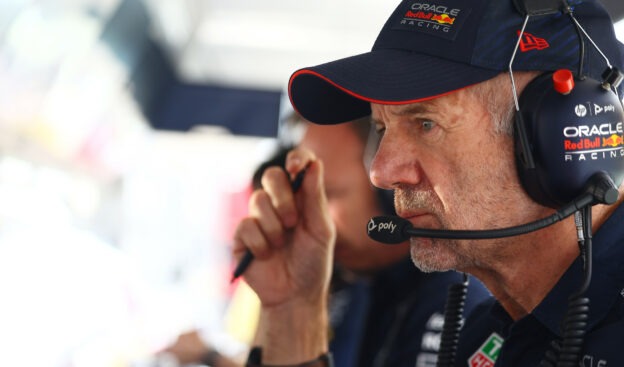Newey's concern: Will 2026 power unit changes backfire on F1?

Jun.14 - There is a "big risk" Formula 1 will enter another period of one team dominating all the others once the big regulation changes for 2026 take effect.
World champion Max Verstappen is easily on course for a third consecutive drivers' crown this year - but he thinks Red Bull's dominance will ease over time.
"I think the longer you leave the regulations the same, the closer people will get," he said. "So maybe this is something we need to look at."
F1, however, is pushing ahead with the major 2026 rules changes, involving drastically ramping up the electric or 'hybrid' side of the power units.
It has convinced Honda to stay in Formula 1 while Volkswagen-owned Audi is setting up a 2026 works project - but Adrian Newey warns that it may backfire on the sport.
"The big risk now is the new change in power units in 2026," Red Bull's technical boss, and one of the most famous F1 designers of all time, told Sky Italia.
Newey said Red Bull's current dominance is mainly about aerodynamics - which is much easier for the straggling teams to simply copy.
"But if there's a big difference in power units, it takes time for the manufacturers to understand and close the gap. The chassis people can react faster," he said.
He recalls the start of the current 'power unit' period in 2014, which led to Mercedes' long run of dominance that only ended in 2021.
"When the regulations for the hybrid era were first introduced, there were huge differences," said Newey. "Mercedes had done a fantastic job with their power unit and other teams were behind to varying degrees.
"Now it's basically levelled out," he explained. "I would say there is maybe a 2 or 3 percent difference in power now, which could be two or three tenths - which is still significant when the field is so close together.
"But it's not the same as that one second when the rules were introduced."
✅ Check out more posts with related topics:













That side-effect risk always exists with considerable technical rule changes, especially when they center on the powertrain hidden under a PU cover.
However, the upcoming concept change is necessary for the long-term carbon-neutrality target.
Adrian is correct and this is largely due to the restricted and almost non-existent testing which limits development and getting a wrong design on the right path. When the Turbo era of the 80's dawned Honda was on the back foot with a design that did not work well. Due to a wide availability of testing it took them only six races to rectify the problem and have a winning power plant on the grid. In the new hybrid era they faced a similar situation that took six seasons to rectify. This was not because they did not know how but because they could not test fixes except on race weekends and could not implement them except at certain times of the season. It would seem that there is a better way to maintain cost in a reasonable framework and yet allow innovation.
✅ Checkout the latest 50 F1 Fans comments.